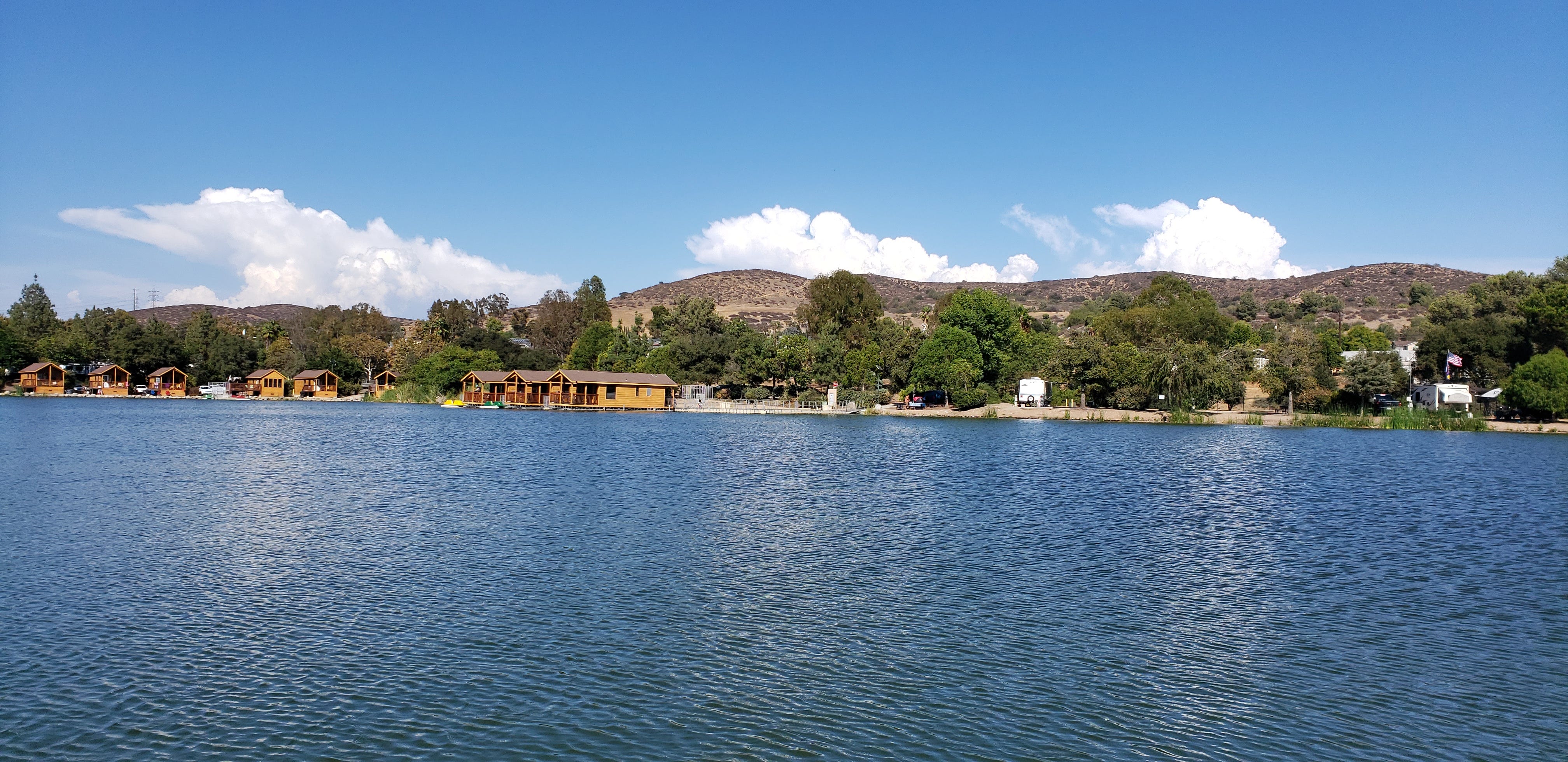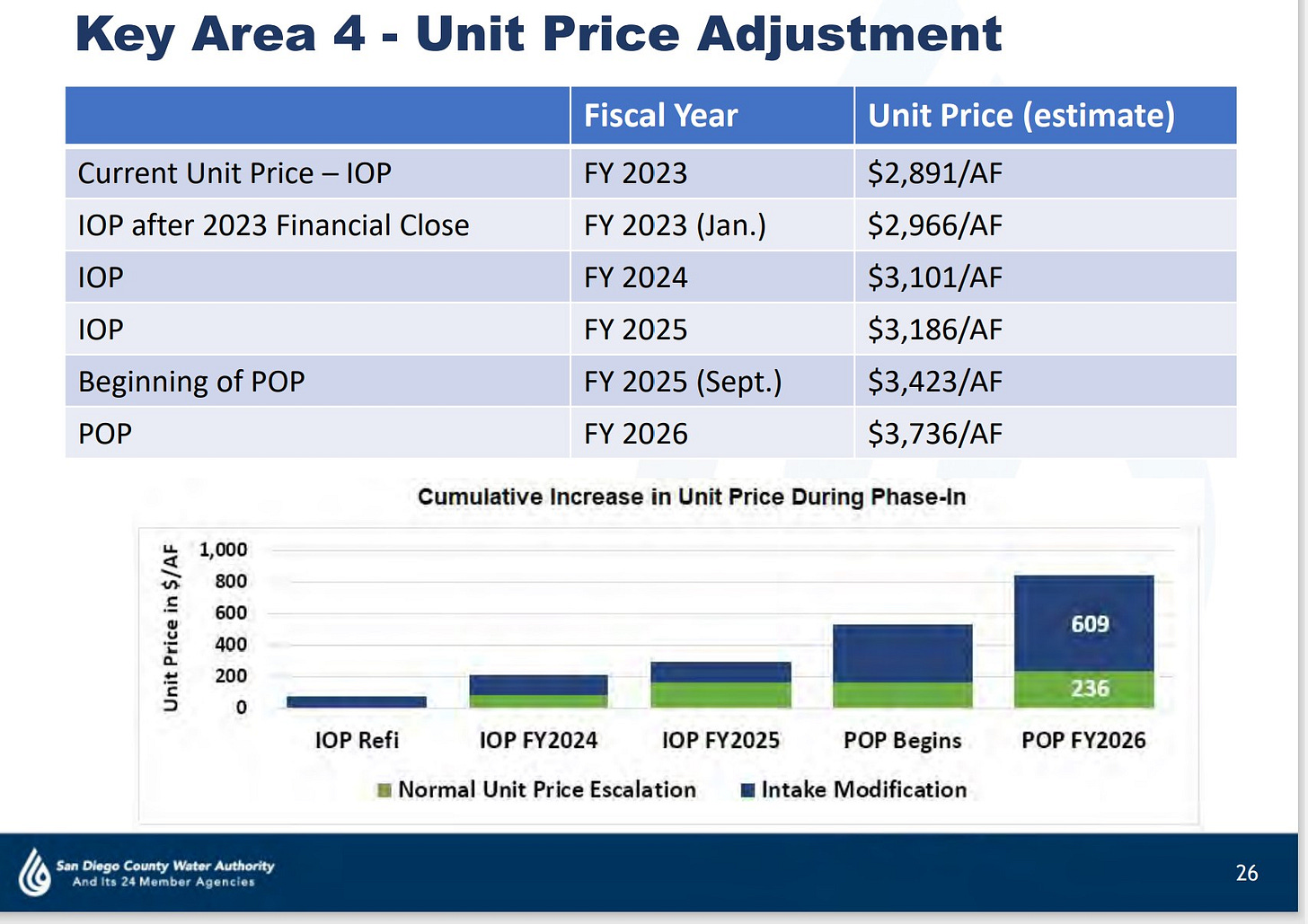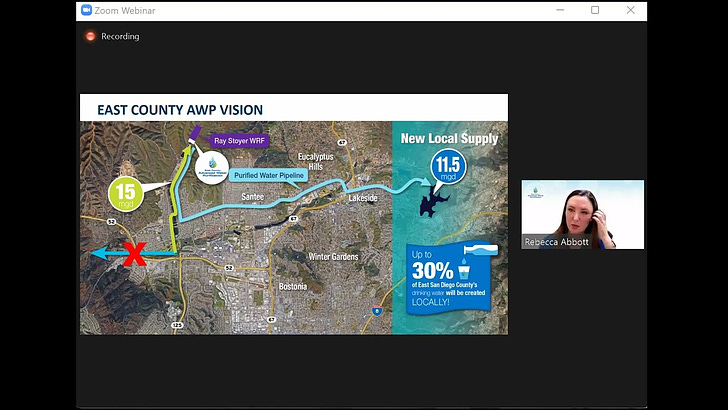(Re-send) Padre Dam's Pure Water project will replace SDCWA imports by 30 percent
It will decrease dependency on Colorado River water and expensive ocean desalination supplies provided by San Diego County Water Authority
Note: Video uploads in the previously emailed version of this article did not show up so I have replaced them to YouTube links instead. Sorry for the inconvenience.
The following webinar presentation (recorded June 22 and posted below) is part of a Southern California Water Dialogue series sponsored by the Metropolitan Water District of Southern California and facilitated by Conner Everts of the Southern California Watershed Alliance.
Titled “Taking Action - Three Approaches to Increasing Water Supply,” it examines in three parts the advancement of water purification projects and technology as a way to guarantee the reliability of future water-supply resources—despite, and this is my analysis not the presenters’, the self-inflicted mass destruction of our natural environment and the resulting climate disaster that we are nowhere near-enough to addressing, much less containing.
The first part (above) is presented in detail by Rebecca Abbott of the Padre Dam Municipal Water District, which “provides water, wastewater, recycled water and park and recreation services to over 100,000 residents in the East San Diego County communities of Santee, El Cajon, Lakeside, Flinn Springs, Harbison Canyon, Blossom Valley, Alpine, Dehesa and Crest.” (see socalwaterwars videos of the official grand opening below)
Padre Dam MWD imports 100 percent of its drinking water—at a high cost—through the San Diego County Water Authority.
Ms. Abbott is the engineering manager for the East County Advanced Water Purification Program that will build a $950 million wastewater recycling facility to be jointly run by Padre Dam, Helix Water District, San Diego County, city of El Cajon, and the city of San Diego.
It will create about 13,000 acre-feet of drinking water each year from wastewater, about 30 percent of the service area’s total drinking water. The water will be created from 15 million gallons per day of wastewater collected from the five agencies.
Normally, Padre Dam treats 2 million gallons of that wastewater and dumps into the Santee Lakes—a collection of adjacent disposal ponds also used for recreational purposes. The rest o f the partially treated wastewater is sent 20 miles to Point Loma where it is treated a bit more and then dumped into the ocean.

When the purification plant starts operating in 2026, according to the plan, the fully treated water will be diverted to Lake Jennings for surface storage, then treated again before it’s distributed as drinking water.
A recent study by the non-partisan Pacific Institute concluded that “reuse of municipal wastewater could boost local water supplies in the South Coast by up to 1.1 million acre feet a year, tripling current reuse levels.”
Besides Padre Dam’s water purification plan, Oceanside’s own pure water project is under way, producing 5,475 acre-feet of drinking water a year. And the city of San Diego’s $5 billion two-phase pure water project will produce 59,000/AF of drinking water (50 percent of its total supply) to be completed in 2025 and 2035.
That amounts to a huge hit in water sales for the San Diego County Water Authority, the wholesaler that supplies the county’s local water agencies with imported Colorado River water and expensive desalinated ocean water from its Carlsbad plant—the latter which will increase its water price by more than $1,000 per acre-foot, going up to nearly $4,000/AF by 2026.

On top of that, water use has been declining for decades due to conservation and rising rates that are uniquely high in San Diego County—due to debt from infrastructure projects like the Carlsbad desalination plant, San Vincente Dam and regular infrastructure maintenance.
The next presentation (to be posted later this month) is by Shivaji Deshmukh and Elizabeth Hurst of the Inland Empire Utilities Agency about the $650 million Chino Basin Program including the expansion of the agency’s Regional Water Recycling Plant No. 5 (accompanied by my exclusive report with photos and video from inside the construction site).
Preview, Chino Basin Program (taken April 14, 2022 by socalwaterwars):
The third presentation (to be posted early next month) is made by Azita Yazdani, P.E., founder and CEO at exergy Systems, Inc., about applying new technologies to wastewater recycling.




